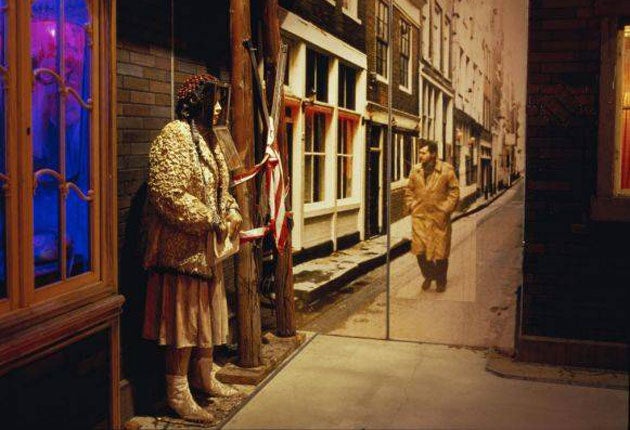Is the National Gallery prostituting itself just to pull in the punters?

Your support helps us to tell the story
From reproductive rights to climate change to Big Tech, The Independent is on the ground when the story is developing. Whether it's investigating the financials of Elon Musk's pro-Trump PAC or producing our latest documentary, 'The A Word', which shines a light on the American women fighting for reproductive rights, we know how important it is to parse out the facts from the messaging.
At such a critical moment in US history, we need reporters on the ground. Your donation allows us to keep sending journalists to speak to both sides of the story.
The Independent is trusted by Americans across the entire political spectrum. And unlike many other quality news outlets, we choose not to lock Americans out of our reporting and analysis with paywalls. We believe quality journalism should be available to everyone, paid for by those who can afford it.
Your support makes all the difference.A walk-through installation that recreates Amsterdam's red light district would not look out of place in the Tate Modern's immense Turbine Hall. But Hoerengracht – Dutch for whore's alley – is among the highlights of the National Gallery's exhibition programme for 2009.
The gallery is better known for its Old Masters, but the installation by Ed and Nancy Kienholz is not the only display that will draw on the work of 20th century artists. A "blockbuster" exhibition of Pablo Picasso's work,Picasso: Challenging the Past, will be staged from February.
As a result, the National has been accused of attempting to lure the Tate Modern's "art student" audiences. But the gallery's director, Nicholas Penny, denied it was part of a concerted effort to show more contemporary art.
"We will continue to interact with contemporary art but there are no plans to increase it," he said.
Dr Penny did, however, suggest that a contract signed in 1996 with the Tate, which stipulated that the National's acquisition policy should stray no closer to the present than the year 1900, may need to be "re-negotiated". His words led to speculation over a possible change of direction for the National. "I know historically, 1900 was the stopping point for our permanent collection. There is no agreement of that kind. We are not happy with 1900 as the final ending of the National Gallery's collection. It's a matter to be discussed in the future and this is not the right moment to discuss it. What is right is that we have a proper understanding with Tate about what we are trying to do," he said.
Chris Wiggins, head of the education department which devises the gallery's contemporary programme, said the aim of installing Hoerengracht at the gallery in November next year was to draw parallels between recent works and the gallery's older works that deal with "contemporary themes" such as the sex trade.
"It's easy to mistake our permanent collection as historical but the themes that Old Masters dealt with are also 21st-century issues such as the sex trade, which was a standard theme in the paintings of 17th century Dutch masters."
Another reason for staging contemporary shows, which have included works by Ron Mueck and Alison Watt, was to attract the younger audience that Tate Modern usually draws, added Mr Wiggins.
But he denied attempting to hive off visitors from the Tate. "This is not like supermarket wars as our audiences can be mutual," he said. "We hope our more conservative viewers will see contemporary pieces and perhaps be drawn to visit the Tate, and vice versa. The education department here is particularly interested in working on contemporary shows because of the art student audience which is quite hard to reach."
Chris Riopelle, from the National, said the Picasso exhibition was well suited to the gallery as it would look at the impact of the 19th-century European tradition on Picasso's modern works and how his paintings were "deeply implicated in the art of the past".
Join our commenting forum
Join thought-provoking conversations, follow other Independent readers and see their replies
Comments